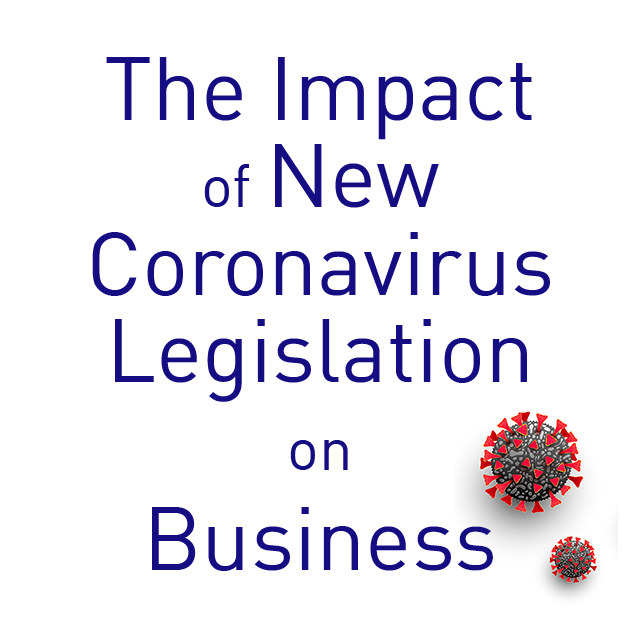Coronavirus-Related Tax Relief for the Real Estate and Agricultural Industries
Published: April 13, 2020
Through various mechanisms, the federal government has issued several forms of tax relief to real estate and agricultural businesses impacted by the current COVID-19 pandemic. The majority of the tax relief was included in the Coronavirus Aid, Relief, and Economic Security Act (the “CARES Act”). However, the Internal Revenue Service has also issued guidance providing additional relief. This discussion is intended to serve as a high-level summary for professionals in the real estate and agricultural industries seeking tax relief.
a. Net Operating Loss Carrybacks. When a taxpayer’s total deductions exceed its gross income for a given year, the taxpayer has a net operating loss (or NOL). Taxpayers who incurred NOLs in tax years 2018 and 2019 were not permitted to carryback those losses to generate a refund of taxes paid during previous tax years. Now, under the CARES Act, taxpayers will have a 5-year carryback of NOLs incurred in 2018, 2019 or 2020. Accordingly, if your business generated an NOL in 2018 or 2019 and had earned taxable income in prior years, you may be able to amend your tax returns and receive an immediate tax refund. Similarly, any 2020 NOL can be used to generate a refund of prior year taxes when tax returns are filed next year. Note that, by separate guidance, the IRS is permitting amended returns for certain partnerships which were previously precluded from filing amended returns.
b. Retail Glitch / Qualified Improvement Property Fix. “Qualified Improvement Property” is essentially any improvement made to an existing non-residential building. The 2017 Tax Cuts and Jobs Act (“TCJA”) inadvertently eliminated bonus depreciation for Qualified Improvement Property. To remedy this, the CARES Act includes a technical correction reinstating the bonus depreciation deduction for taxpayers effective as of tax year 2018. Taxpayers can immediately amend their 2018 and/or file 2019 tax returns and claim these additional deductions to produce a tax refund.
c. Modification of Limitation on Business Interest. Current tax law limits taxpayers’ net interest expense deduction to 30% of adjusted taxable income. “Electing real property trade or businesses” (“ERTBs”) are exempt from this 30% limitation. However, electing ERTB status decreases the amount of depreciation available to such business for income tax purposes.
The CARES Act modified the 30% limitation for tax years 2019 and 2020. For partnerships, the 30% limitation continues to apply for the 2019 tax year. However, partners of the partnership may deduct 50% of the 2019 disallowed excess business interest expense on their 2020 returns without regard to the applicable percentage limitations. Additionally, the partnership’s 2020 limitation is increased from 30% of adjusted taxable income to 50% of adjusted taxable income. For taxpayers other than partnerships, the 30% limitation is increased to 50% for tax years 2019 and 2020.
Additionally, the IRS has issued guidance allowing businesses to withdraw a previous election to be treated as a real property trade or business, thereby allowing the business to potentially optimize the amount of interest expense deductions and depreciation deductions.
d. Extensions of Time-Sensitive Actions (Section 1031 Exchanges and Qualified Opportunity Zones). As you may be aware, the deadline to file and pay 2019 federal income taxes has been extended to July 15, 2020. Additionally, in recent guidance, the IRS is permitting certain taxpayers engaged in active section 1031 exchanges to extend the 45-day identification period or the 180-day period to complete the exchange until July 15, 2020. If you are engaged in an exchange and either the 45-day period or the 180-day period falls between April 1 and July 14, 2020, the applicable period is automatically extended to July 15, 2020.
Similarly, the Qualified Opportunity Zone tax incentive program permits taxpayers to reinvest capital gains within 180 days of realizing such gains into a Qualified Opportunity Fund and thereby defer recognition of the realized gains. If your 180-day investment period falls between April 1, 2020 and July 14, 2020, you have until July 15, 2020, to invest any realized capital gains into a Qualified Opportunity Fund and realize the full benefits of the Qualified Opportunity Zone tax incentive program.
e. Losses incurred by Owners of Pass-through Entities. The TCJA imposed limits on the amount of business losses non-corporate taxpayers could use to offset non-business income for tax years starting in 2018. The CARES Act has withdrawn these limits, allowing owners of businesses conducted through pass-through entities generating large losses to offset unlimited amounts of personal non-business income through 2020. Taxpayers who incurred significant business losses in 2018 or 2019 which exceeded the permitted limits should file amended returns to claim refunds. This provision may be of particular importance to individuals with large real estate portfolios.
f. Employee Retention Tax Credits. Eligible employers will receive a refundable credit against payroll taxes. To be eligible, the employer must have (i) had its business operations fully or partially suspended by governmental order or (ii) suffered a 50% reduction in year-over-year gross receipts (comparing calendar quarters). The credit can be as much as $5,000 per employee. This credit cannot be used by certain SBA loan recipients.
g. Deferral of Employer’s Share of Payroll Taxes. Employers and self-employed individuals will be permitted to defer payment of the employer share of social security taxes for the remainder of the year. One-half of deferred payroll taxes must be paid by the end of 2021 and the remainder must be paid by the end of 2022. Recipients of loan forgiveness under the SBA Paycheck Protection Program will not be permitted to defer payment of payroll taxes.


